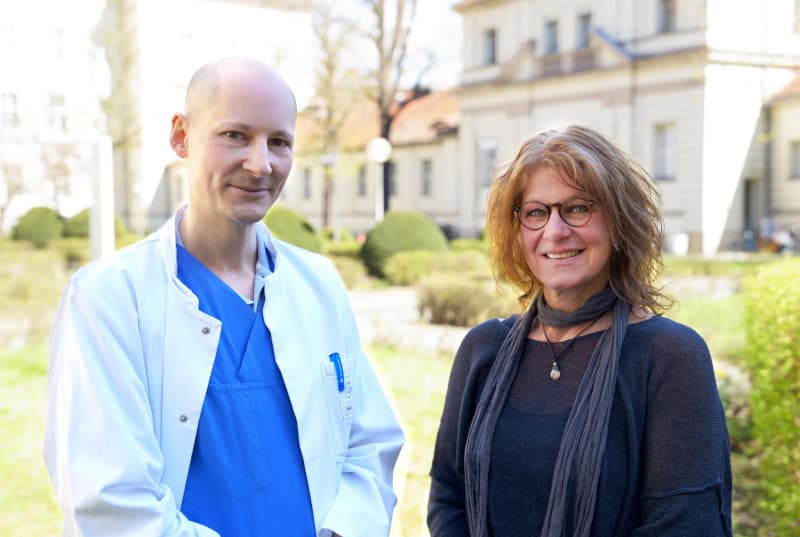The research team's goal is to spare patients with dangerous mutations in their heart muscle cells the stress and risks associated with the disease - with the possibility of testing personalised therapies in the test tube.
Romy Grunwald wants to run the Berlin Marathon in 2017 in three hours and 15 minutes - a not unrealistic time. After all, the then 50-year-old is a former competitive athlete, a passionate long-distance runner - and a person who not only sets ambitious goals in life, but also consistently pursues them.
But on 24 September, Romy Grunwald's run ended at kilometre 37 - and almost her life as well. The mother of four stumbled and collapsed unconscious. She was immediately rushed to hospital. Her condition was critical.
Romy Grunwald finally learns that she is suffering from a special form of a disease that is as rare as it is insidious: "Catecholaminergic polymorphic ventricular tachycardia (CPVT)" is a dysfunction of the heart muscle that can remain asymptomatic for years but, if left untreated, can lead to sudden, severe rhythm disturbances in the heart chambers during physical exertion - and thus to sudden cardiac death, usually before the age of 30.
Patients diagnosed with CPVT must have a defibrillator implanted to prevent recurrence of ventricular fibrillation, and the condition can also be treated with drugs. However, despite similar symptoms and effects, CPVT can be caused by different, even previously unknown, genetic mutations - and thus different "mechanisms" of the disease in the heart muscle cells.
The choice of the best drug and its optimal dosage is particularly difficult for physicians when, as in the case of Romy Grunwald, the disease is caused by unknown mutations in the genetic material of the heart muscle cells. As a result, drug therapy is largely based on the "trial and error" principle: drugs and dosages have to be tried out one after the other.
A research team led by cardiologist PD Dr. med. Felix Hohendanner of the German Heart Centre at the Charité (DHZC) has set itself the goal of sparing patients with dangerous mutations in their heart muscle cells the stress and risks associated with this in the future - with the possibility of testing individualised therapies in the test tube.
The project, which has received 75,000 euros in funding from the German Centre for Cardiovascular Research (DZHK), is based on "induced pluripotent stem cells": "These are "normal" skin cells that can be easily removed and genetically reprogrammed into stem cells - cells that can develop into almost any type of cell in the body.
From these stem cells, scientists can then develop heart muscle cells with the individual genetic profile of each patient - and therefore with the exact mutations responsible for CPVT.
In this way, different drugs, their dosages and combinations can be tested repeatedly and without risk in the laboratory, even drugs that are still in the trial phase.
The procedure - in particular the generation of induced pluripotent stem cells - is very complex, explains Felix Hohendanner, and has so far been limited to a small number of patients with novel mutations.
However, Felix Hohendanner, senior physician at the DHZC, believes that the procedure has broader prospects and that further intensive research is needed: "In principle, it could be applied to any type of genetic myocardial disease.
For Romy Grunwald, it was possible to determine the optimal drug for her individual case - in addition to the clinical aspects, the results "from the test tube" also played a role for the rhythmology team at the DHZC. Since then, she has been spared life-threatening cardiac arrhythmias.
In 2005, the law graduate and former lawyer fulfilled a lifelong dream by opening her own studio, offering art classes for all ages. Against all odds and many predictions, she has been and continues to be successful.
Although the marathons have been over for her since 2017, Romy Grunwald has long since resumed her active life. Clearly aware of her diagnosis and the limitations that come with it, but also trusting in a good treatment team - and with a great zest for life.

